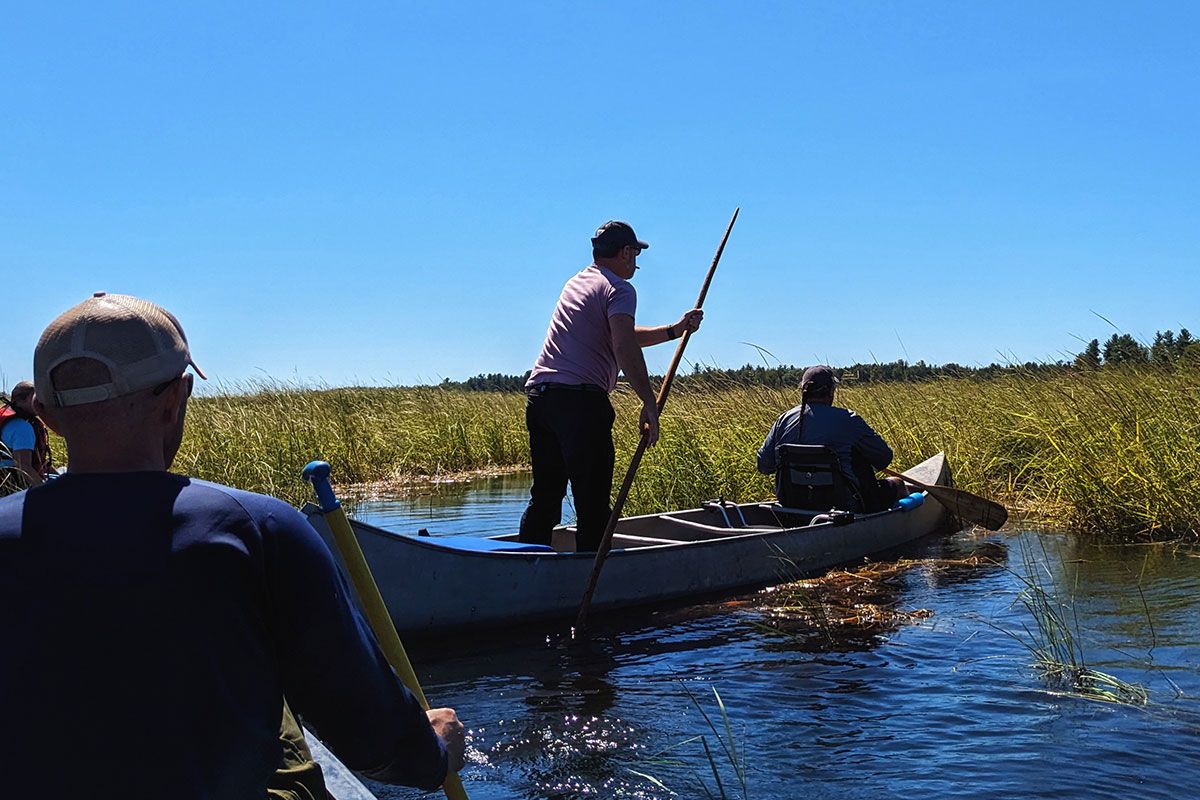
Credit: Vincent Salgado
Program: U-M Water Center
Program details » | All U-M Water Center projects »
The Michigan Wild Rice Initiative (MWRI) is a collaboration among the twelve federally recognized Anishinaabe nations that share geography with the state of Michigan and several Michigan state agencies. Together with federal, NGO, and academic partners, the MWRI is working to restore and revitalize Manoomin (wild rice) while promoting awareness and education of this sacred relative. The MWRI hope to encourage people of all communities to connect with Manoomin in a good way and seek ways to sustain and protect them.
As part of this work, the MWRI released We all live together in a good way with Manoomin: Stewardship Guide (PDF) in 2025. The Water Center provided support to the MWRI in compiling stories and information from traditional ricers, knowledge holders and others whose work or circumstances could support Manoomin well-being, and then developing the Stewardship Guide for feedback and input of the Manoomin community across Michigan. This living document will change with later editions as Manoomin shares more knowledge with MWRI and MWRI learns to better work together in a good way.
We All Live Together in a Good Way with Manoomin: Stewardship Guide tells the story of Manoomin through an Anishinaabe perspective. The document uses language that centers relationship and care among relatives. It presents an overview of Manoomin, their preferences for living places, and their relationality with human and non-human relatives.
The guide also explores the socio-ecological context of Manoomin restoration and revitalization, including physical limitations (e.g., competitive newcomers commonly known as “invasive species”) and governance factors (e.g., water law). To approach these challenges, the guide offers a series of goals and objectives that partners can help support as they choose. The goals are not standards or prescriptions across the Manoomin community, as community members agreed on promoting decentralized, locally-led efforts.
The document also provides a detailed overview of the significance of Manoomin as a relative of the Anishinaabe people. The Anishinaabe people and Manoomin have nurtured a sacred relationship for many generations. Therefore our restoration efforts center support for Anishinaabe communities to reconnect and grow their relationships with Manoomin.
The guide shares personal stories from members of the Manoomin community, offering messages from a variety of voices to enable readers to see themselves building a transformative relationship with Manoomin. The storytellers highlight how Manoomin has helped them flourish in face of difficulty and offer advice for how Manoomin can help others.
A significant portion of the guide focuses on relationship building between and among the Manoomin community and its allies. Although this may not be common in stewardship plans, having strongly braided relationships is central to Manoomin restoration and revitalization efforts, especially in the long term. The best available research, funding, and equipment are only as effective as the strength of kinship.
To aid in braiding communities and partners, this document respectfully introduces readers to some core Anishinaabe moral teachings to ground collaborations. It offers extensive ideas and practices to kindle and nurture healthy relationships that grow the Manoomin community in a good way. The Manoomin community invites all people across these two peninsulas to grow relationship and strengthen each other. We hope to see you at the Manoomin camps in the near future.
Contact: Jen Read / Vincent Salgado ([email protected])